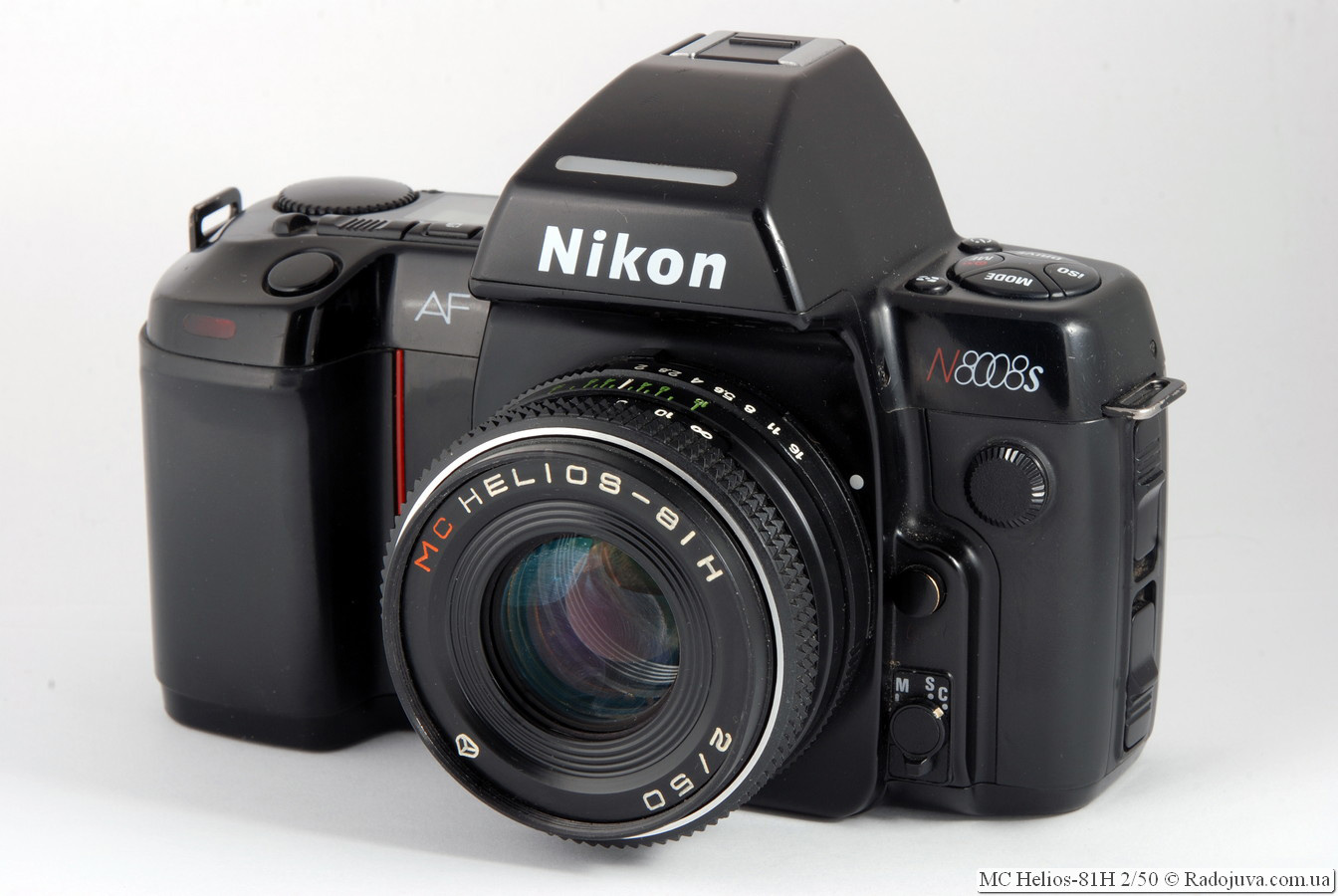
MC Helios-81H 2/50 lens on the camera Nikon AF N8008s. Enlarge Image.
In short
MC Helios-81H 2/50 (or MC Helios-81H 2/50, or Arsat H 50mm 1: 2) - is one of the best standard lenses of Helios family... This lens is most often called a 'fifty-kopeck piece' because of the focal length of 50mm. On full-frame cameras (film and digital cameras with a frame size of 36 x 24 mm) it is standard (in terms of focal lengths and angle of view) and is suitable for everyday use for a wide range of tasks. Helios-81 can also be used as a portrait and creative lens on modern cropped cameras.
In my opinion, Helios-81 earned its popularity due to its compatibility with Nikon digital SLR cameras with Nikon F mount. The bulk of the lenses of the Helios-81 family do not require any adapters and work similarly to the original manual Nikon Nikkor AI / PRE-AI lenses. ...
Also, the popularity of the lens is associated with a special twist of the background, inherent in many lenses of the Helios family, as well as good optical capabilities at a fairly low cost. On average, Helios-81N can be found for $ 30.
Critical: there are many different versions of the Helios-81 H/M/AUTOMATIC family of lenses. If the latest versions are indeed some of the best standard lenses from Helios family, then early versions are the worst... Early versions are easily distinguished by their wide focusing ring and serial number near the front lens. These options have many mechanical problems. Later and better versions have a serial number in small print on the side of the aperture control ring. Here is such a paradox - from the best to the worst is just a step. I strongly advise against messing with these early versions (shown, for example, in the 'Appearance # 3' section). And also by no means do not purchase lenses marked 'AUTOMATIC'... Lenses series Helios-81N AUTOMATIC have a different mount, for which there are no adapters for any cameras (the appearance of lenses HELIOS-81 2/50/53 AUTOMATIC shown here). If something is not very clear, or if you want to be 100% sure that the future purchased lens will please you - ask here in the comments, or contact me according to my personal contacts.
It is difficult to overestimate the creative potential of such fifty dollars. Photo enthusiasts often use it as a portrait lens. Many people just want a fast prime, especially in addition to their stock / kit lens. Aperture F / 2 approx. three steps wider aperture of f / 5.6, which is used in 'dark' kit lenses at the long end. In numerical terms, this means that Helios-81 is approximately 8 times brighterthan, for example, whale Nikon DX VR AF-P Nikkor 18-55mm 1: 3.5-5.6Gwhich use a maximum relative aperture of only 50: 1 over a 5.6 mm focal length. The calculation of the difference in the relative aperture (count the aperture) is performed elementarily: (5.6 * 5.6) / (2 * 2) = 7.84, which is rounded to the value '8'.
History
Helios-81 is a descendant of the Helios-65 (HELIOS 65 AUTOMATIC 2/50), which, in turn, is a shortened descendant of the lenses family Helios-44.
The Helios-81 lens family includes many models and their modifications. In general, the development of the line proceeded as follows: Helios-81 AUTOMAT -> Helios-81 M or N -> MC Helios-81 M or N -> MC Helios-81 N -> Arsat H. Each of the modifications has several subversions.
For practical use, the latest versions of MC Helios-81 H (aka 'MC HELIOS 81 H') and Arsat are best suited for which the serial number is indicated in small print on the lens barrel, and not near the front lens.
Appearance # 1
Lens shown below MS HELIOS-81H 2/50 with serial number 9227112, presumably produced in 1992. The front and rear lenses of the objective have cyan, blue, lilac, violet and red anti-reflective shades.
Appearance # 2
Lens shown below MC HELIOS-81H 2/50 with serial number 9315003, presumably produced in 1993. The front lens of the objective has green, purple and red shades of enlightenment.
Appearance # 3
Lens shown below MS HELIOS-81M 2/53 with serial number 8204223, presumably produced in 1982. Filter diameter 49 mm. The front lens of the objective has blue, lilac, violet, red and yellow anti-reflective shades. The petals of the diaphragm are shiny, yellowish-orange (copper-colored). The focus ring rotates 315 degrees (7/8 of a full turn). Three intermediate clicks between F / 2 and F / 2.8 and two intermediate clicks between the other pairs of f-numbers (rare). Does not sit on without alteration Nikon D70, D70s, D80, D90... Nikon is installed on the rest of the CZK without problems. No protrusion for the diaphragm rheostat, with a long 'skirt' of the diaphragm control ring (but the skirt does not rest against the diaphragm rheostat). Nikon F mount, letter 'M' stands for 'M' blinking aperture.
Appearance # 4
Lens shown below ARSAT H 50mm 1: 2 with serial number 9417121, presumably produced in 1994. The front lens of the objective has green, purple and blue shades of enlightenment.
Appearance # 5
Lens shown below HELIOS-81N 2/53 with serial number 8309805, presumably produced in 1983. Filter diameter 49 mm. The front lens of the objective has bluish and ash shades of enlightenment. The diaphragm blades are shiny, silvery. The focus ring rotates 315 degrees (7/8 of a full turn). Three intermediate clicks between F / 2 and F / 2.8 and two intermediate clicks between the other pairs of f-numbers (rare). Does not sit on without alteration Nikon D70, D70s, D80, D90... Nikon is installed on the rest of the CZK without problems. No protrusion for the diaphragm rheostat, with a long 'skirt' of the diaphragm control ring (but the skirt does not rest against the diaphragm rheostat). Nikon F. mount.
Main technical specifications MC Helios-81H 2/50
| The name of the instance from the review (as it is written on the lens itself) | MC Helios-81H 2/50 with the logo of the Arsenal factory (there are a lot of other ways to write the name of the lens) |
| Basic properties |
|
| Front Filter Diameter | 52 mm (there are options for 49 mm) |
| Focal length | 50 mm (according to some sources - 52 or 53 mm), EGF for cameras with an APS-C type sensor is approximately 75 mm |
| Zoom ratio | 1 x |
| Designed by | for film cameras with a frame size of 36 mm X 24 mm |
| Number of aperture blades | 6 petals. Petals form a hexagon of approximately the correct shape. Petals are dull metal, not blackened. |
| Tags |
|
| Diaphragm | From F / 2 to F / 16.0, it is regulated by the aperture ring, there is no diaphragm operation method switch on the lens. The ring has one intermediate fixed value between the indicated pairs of numbers (between F / 11 and F / 16 there is no intermediate value). |
| MDF (minimum focusing distance) | 0.5 m, maximum magnification ratio is 1: 7 (approximately) |
| The weight | 214 grams measured without caps (lens itself only) |
| Optical design | 6 elements in 4 groups, ('Planar' type scheme) |
| Lens hood | screwed into the front filter, the original lens hood markings were not found. Any analogs are suitable, according to type of such |
| Manufacturer country | USSR, Arsenal plant (later the lens was produced under the 'Arsat' brand in Ukraine). |
| Period | Several years, the exact period of production is unknown. |
Lens modifications
Please note that there are many modifications of the lens and many spellings of its name. The main ones are:
'AUTOMATIC' versions
- Helios-81 2/50 Automatic - you can see an overview of this modification here
- Helios-81 2/53 Automatic - you can see an overview of this modification here
- Helios 81 2/50 Automatic (no dash between 'Helios' and '81')
Versions 'М 2/53'
- Helios-81М 2/53 with H-mount, metal silvery unblacked petals, you can see an overview of this modification here
- Helios-81М 2/53 H-mount, copper colored metal petals not blackened
- MS Helios-81M 2 /53 H-mount, copper-colored, unblacked metal petals (appearance # 3 from this review)
Versions 'H'
- MS Helios-81H 2/50 (with serial number near the front lens, long skirt of the aperture control ring, wide focusing ring)
- MS Helios-81N 2/50 (serial number from the bayonet side, short skirt of the diaphragm control ring, lilac enlightenment, one of the most common and classic options)
- MS Helios-81N 2/50 (serial number from the bayonet side, short skirt of the diaphragm control ring, green enlightenment, one of the most common and classic options)
- MS Helios-81N 2 /53 (appearance # 5 from this review)
- Helios-81Н 2/53 (analogue of Helios-81M 2/53)
- ARSAT H 1: 2 50mm - an almost complete copy of MC Helios-81N 2/50, the differences are described here
- MC Helios-81h 2/50 - full copy of MS Helios-81H 2/50, export version, this version looks like like this.
- MC Helios-81 2/50 - full copy of MC Helios-81N 2/50, export version
Other versions
- Helios-81 2/50
- Helios-81 2/52 (diaphragm ring on the front of the lens)
- Helios-81 (GK-81)
- GOI << HELIOS-81 >> 2 / 52,4 (silver metal case)
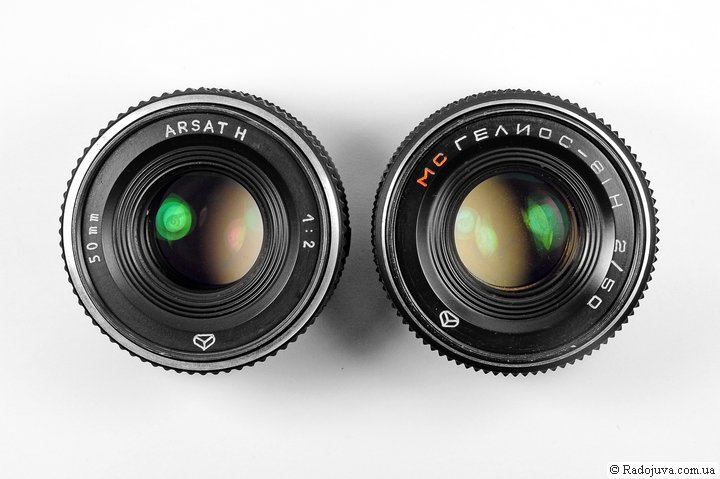
Just different names: ARSAT 1: 2 50mm МС ГЕЛИОС-81Н 2/50
Optically, they are the same lens. The difference between lenses with different names lies in different mounting threads or mounts, body rims, enlightenment and age. Many new lenses MS Helios-81Nreleased in Ukraine (after the collapse of the Union) are called Arsat. This review discusses one of the most popular lenses, namely MS Helios-81H 2/50.
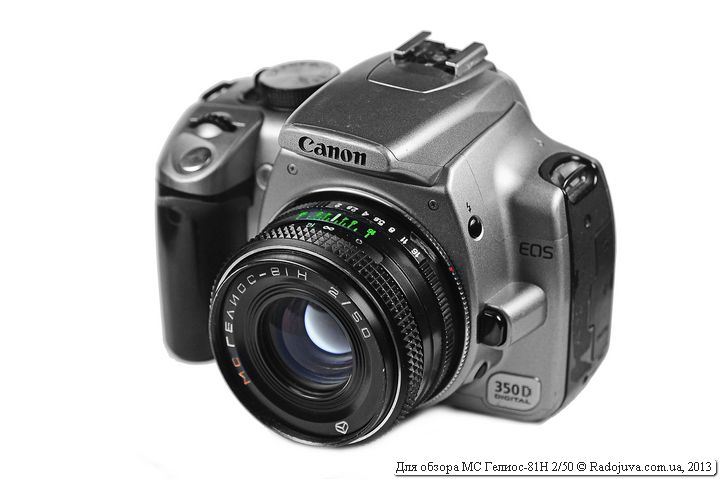
View of the Helios-81N MS lens on a Canon EOS camera 350D Digital The lens is mounted using a cheap adapter Nikon mount F - Canon EOS.
As usual, the first thing you feel and pay attention when using the old lens is its weight, the lens is small, very short, it resembles a pancake. The weight of this “pancake” is quite large. The build quality is usual - a lot of metal and glass. The lens has no backlash.
Interesting: 81-H is read not as 81-'ash ', but as 81-'en'. Easy to remember 81-Nikon, as 'H' mount is Nikon F mount (Nikon F mount)
MS Helios 81-N produced at the Arsenal plants in Kiev or Uman in Ukraine. The lens used special lanthanum glasses - super-heavy crowns with high resolution, this allows you to partially get rid of chromatic aberrations.
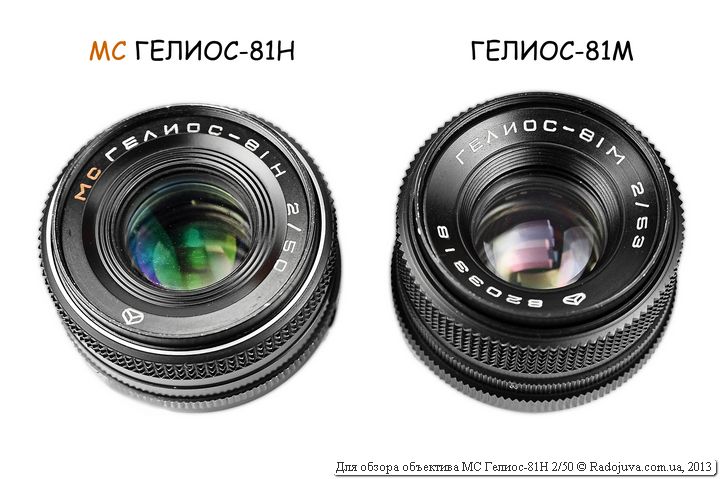
So there are two versions of the Helios 81 lens
How to use with modern cameras
Nikon F-mount DSLRs
To use the Nikon MS Helios-81H 2/50 lens on Nikon DSLR cameras just install the lens without any adapters and shoot for your own pleasure without any tangible limitations. Possibility focusing on infinity, as well as semi-automatic iris control... This is due to the fact that MC Helios-81H 2/50 uses the same bayonet mount (mount type) as the native Nikon lenses. All lenses from cameras Kiev-17, Kiev-17m, Kiev-18, Kiev-19 and Kiev-19m, Kiev-20 use the Nikon F mount, the same as that of modern Nikon DSLRs. Some cameras will even have automatic metering exposure. Exact list of cameras that support metering exposure with manual lenses (such as this one) you can see here or here. For more information on how to use manual lenses, see my article. Soviet optics.
Important: although the lenses MC Helios-81N 2/50 have a protrusion for transmitting the aperture value to the camera through the aperture rheostat (copy AI Nikkor Lenses), while the diaphragm skirt may be too long (like PRE-AI Nikkor Lenses) because some Lenses Helios-81 2/50 without additional modification cannot be installed on modern Nikon DSLR cameras. Some can only be installed on a specific list of cameras. To treat such a disease can be very simple - just cut off part of the diaphragm control ring, as shown in the figure by Sergei Elizarov here.
It's important: if you come across a lens that does not sit on your camera and you don’t want to cut it, you can still easily use the lens on any Nikon DSLR with macro rings... MC Helios-81N 2/50 can be easily installed on any Nikon F cameras via Any extension tube for Nikon F-mount cameras... However, this loses the ability to focus to infinity and medium focusing distances.
Important: to immediately find a variant of MC Helios-81H 2/50, which can work on any Nikon F-mount SLR camera, you need to look for lens options with the name MC Helios-81H 2/50 (or MC HELIOS-81H 2/50) and without a serial numbers near the front lens, as well as any lens variants with the modern name ARSAT.
Important: if something is not clear, or there is a desire to clarify - write in the comments under this review, I and other readers will try to suggest.
Nikon 1 mirrorless cameras
To use the lens on a series of mirrorless cameras Nikon 1 (Nikon 1S1, Nikon 1S2, Nikon 1 V1, Nikon 1 V2, Nikon 1 V3, Nikon 1 J1, Nikon 1 J2, Nikon 1 J3, Nikon 1 J4, Nikon 1 J5, Nikon 1 AW1) use the adapter Nikon F - Nikon 1. The cheapest adapters can be found aliexpress.com. For example, such an adapter can be easily purchased. here.
Important: there are no problems with any versions of Helios-81 for Nikon F mount (Nikon 'N') and any corresponding adapters.
Nikon Z mirrorless cameras
To use the lens on a series of mirrorless cameras Nikon Z use an original Nikon FTZ adapter.
You can use any inexpensive Chinese analogue, for example, such an adapter Nikon AI -> Nikon Z.
Important: there are no problems with any versions of Helios-81 for Nikon F mount (Nikon 'N') and any corresponding adapters.
Canon (EF, M, RF)
In order to install MC Helios-81N 2/50 on any modern digital SLR camera Canon EOS, you will need to use the adapter Nikon mount F - Canon EOS. Possibility focusing on infinity saved. The cheapest adapters can be found aliexpress.com. For example, adapter Nikon mount F - Canon EOS EF (aka Nikon AF-> Canon EF) easy to buy here.
It's important: all lenses of the Helios-81H family (with 'H' / 'Nikon F' mount), regardless of the year of manufacture and the features of the mount, can be installed on any camera without any problems Canon EOS using the specified adapter Nikon mount F - Canon EOS EF (aka Nikon AI-> Canon EF).
To use the lens on mirrorless cameras series Canon EOS M use adapter Nikon F - Canon EOS M (aka Nikon AI-Canon M). The cheapest adapters can be found aliexpress.com. For example, such an adapter can be easily purchased. here.
To use the lens on mirrorless cameras Canon EOS R series, use an adapter Nikon F - Canon EOS R (aka Nikon AI-> Canon RF). The cheapest adapters can be found aliexpress.com. For example, such an adapter can be easily purchased. here.
Sony (A, E)
Using the lens with SLR cameras Sony (DSLRs as well as SLT cameras with a translucent mirror) is difficult. For use, an adapter with a corrective lens should be used, which may negatively affect the image quality. If you still want to use MC Helios-81N 2/50 on cameras Sony / Minolta with A-mount, use the adapter Nikon F - Sony A. The cheapest adapters can be found aliexpress.com. For example, such an adapter can be easily purchased. here.
To use the lens on mirrorless cameras Sony NEX, Sony ILCE, Sony ALPHA with Sony E mount or Sony FEjust use an inexpensive adapter Nikon F - Sony E. The cheapest adapters can be found aliexpress.com. For example, such an adapter can be easily purchased. here... Also available for these cameras autofocus adapter Techart PRO Leica M - Sony E Autofocus Adapterwhich can be found at this link.
FUJIFILM (X, GFX)
X-mount mirrorless cameras require an adapter Nikon F -> Fuji X (aka AI-> X). The cheapest adapters can be found aliexpress.com. For example, such an adapter can be easily purchased. here.
For mirrorless medium format cameras with mount GFX need adapter Nikon F -> Fuji GFX (aka AI-> GFX). The cheapest adapters can be found aliexpress.com. For example, such an adapter can be easily purchased. here.
SIGMA / PANASONIC / LEICA (L, M)
An adapter is required for mirrorless cameras with Leica L mount (T, TL, SL) Nikon F -> Leica L (aka AI-> L). The cheapest adapters can be found aliexpress.com. For example, such an adapter can be easily purchased. here. For cameras with a Leica M mount need adapter Nikon F -> Leica M (aka AI-> M).
PENTAX
Using a lens with Pentax SLR cameras is difficult. For use, an adapter with a correction lens should be used, which can adversely affect image quality. If you still want to use Helios-81H 2/50 MC on Pentax cameras with K mount (and its modifications), then you should use the adapter Nikon F - Pentax K. The cheapest adapters can be found aliexpress.com. For example, such an adapter can be easily purchased. here... The same goes for a mirrorless camera. Pentax K-01.
To use the lens on Pentax mirrorless cameras with Pentax Q mount (Pentax Q, Pentax Q10, Pentax Q7, Pentax Q-s1)just use an inexpensive adapter Nikon F - Pentax Q. The cheapest adapters can be found aliexpress.com. For example, such an adapter can be easily purchased. here.
Samsung (NX)
NX mount mirrorless cameras require an adapter Nikon F -> Samsung NX (aka AI-> NX). The cheapest adapters can be found aliexpress.com. For example, such an adapter can be easily purchased. here. For the camera Nx mini adapters do not exist yet.
OLYMPUS / PANASONIC / KODAK / XIAOMI (mirrorless, MICRO 4/3)
To use the lens on mirrorless cameras OLYMPUS/PANASONIC/KODAK/ XIAOMI (and some others) with a Micro 4/3 mount, it is enough to use an inexpensive adapter Nikon F - MICRO 4/3. The cheapest adapters can be found aliexpress.com. For example, such an adapter can be easily purchased. here.
OLYMPUS / PANASONIC / LEICA (mirrors, 4/3)
For SLR cameras with a 4/3 mount (not to be confused with Micro 4/3!) An adapter is required Nikon F-> 4/3. The cheapest adapters can be found aliexpress.com. For example, such an adapter can be easily purchased. here.
Attention! Lenses of the HELIOS AUTOMAT series
Very important: the lenses Helios-81 2/50 AUTOMATIC и Helios-81 2/53 AUTOMATIC cannot be used with modern cameras. Simply there are no corresponding adapters. Attackers often give out Helios-81 2/50 Automatic (a review of this modification you can see here) и Helios-81 2/53 Automatic (a review of this modification you can see here) for the lens MC Helios-81N 2/50. Be attentive!
Sample photos on Nikon DX (APS-C, crop 1.5X)
Below are my photos for different modifications of the Helios-81 / Arsat H lens:
Jpeg source photos watch and / or download here (200+ photos on Nikon D40).
Sample photos on MC Helios-81H and Nikon FX (full frame, Full Frame)
All photos were taken on a Helios-81N MC and a full-frame camera Nikon D700 FX no processing. Reduced size to 1920 * 1080 pixels and imprinted data from EXIF.
UPDATED
Photographer shared examples of photos on MC Helios-81N 2/50 with readers of Radozhiva Lilia Nemykina:
My experience
I like Helios-81N, with it you can feel the spirit of Soviet lenses, get nice shots and feel like a real manual technician (a photographer who uses manual lenses).
Unfortunately, I must state the fact that in general this fifty kopeck piece loses in many respects to any autofocus similar lens. Helios-81N is very popular, but still, if possible, I recommend using autofocus fifty dollars. Some of them, for example, Nikon 50 / 1.8 AF MKI / II / III (D) (for cameras with a focus motor) or Yongnuo 50 / 1.8 (for any Nikon cameras) are only slightly more expensive than the Helios-81N.
Video review
My video review of the Helios-81 lens family with examples of photos you can see on my Youtube channel, or in the video below:
Results
Latest modifications of Helios 81H - some of the best standard Soviet high-aperture lenses... First of all, Helios 81H is interesting for its twisted bokeh, compact size and low cost. Among the shortcomings, one should single out the difficulty in searching for the “latest” MS modifications and an unblacked diaphragm.
Comments on this post do not require registration. Anyone can leave a comment.
Material prepared Arkady Shapoval.

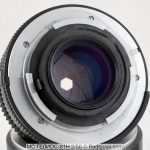
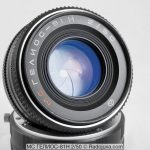
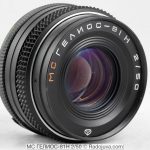
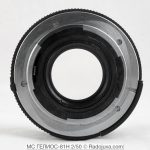
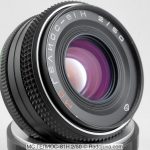
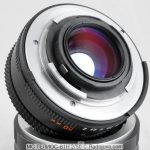

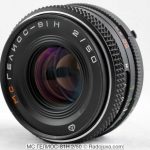
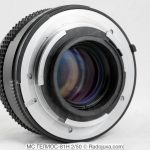
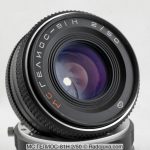
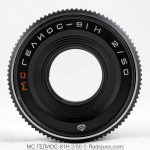

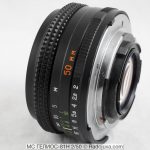
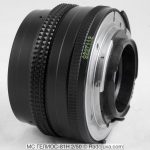
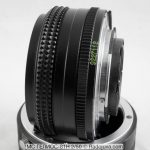

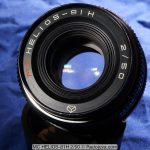
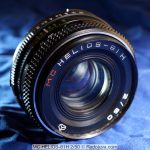
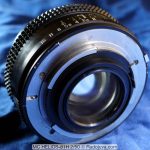


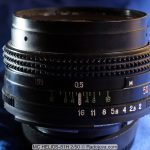
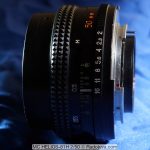
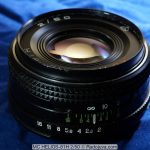
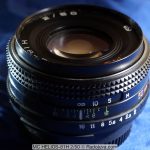
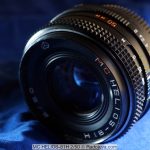
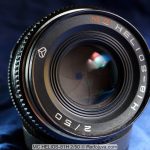
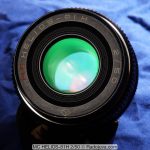

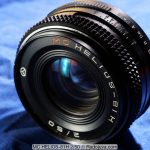
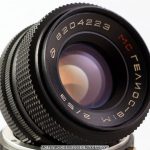
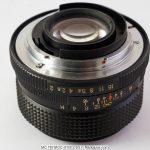
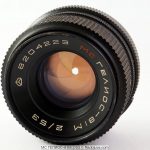
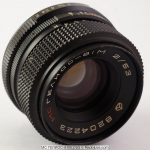
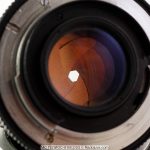
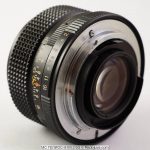
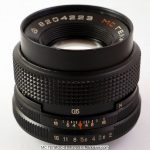
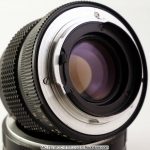
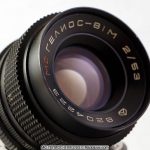
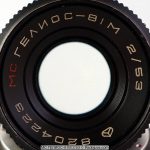
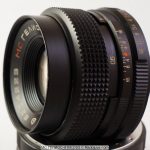
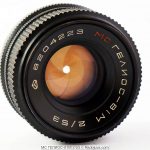
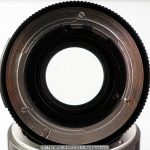
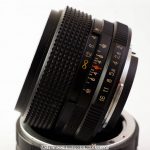
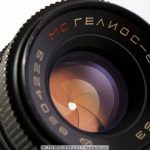
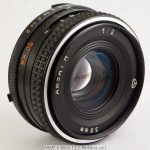
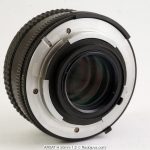
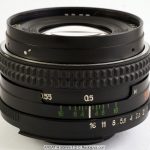
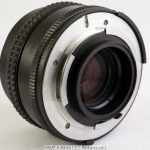
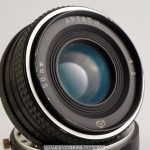
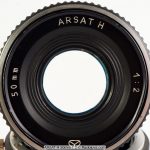
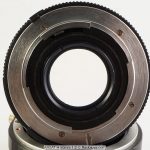
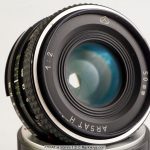
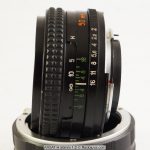
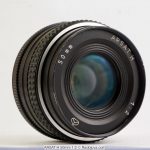

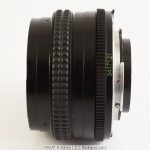
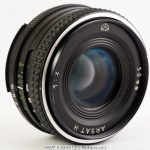
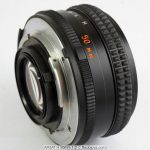
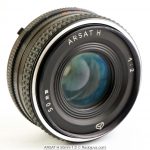
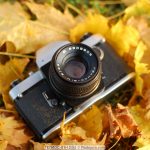
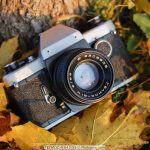
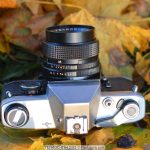


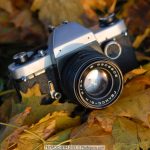
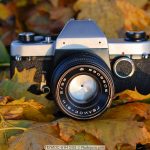
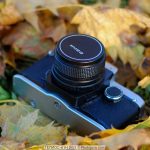
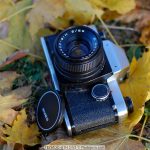
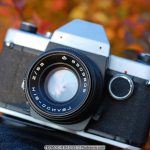
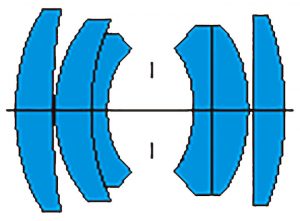
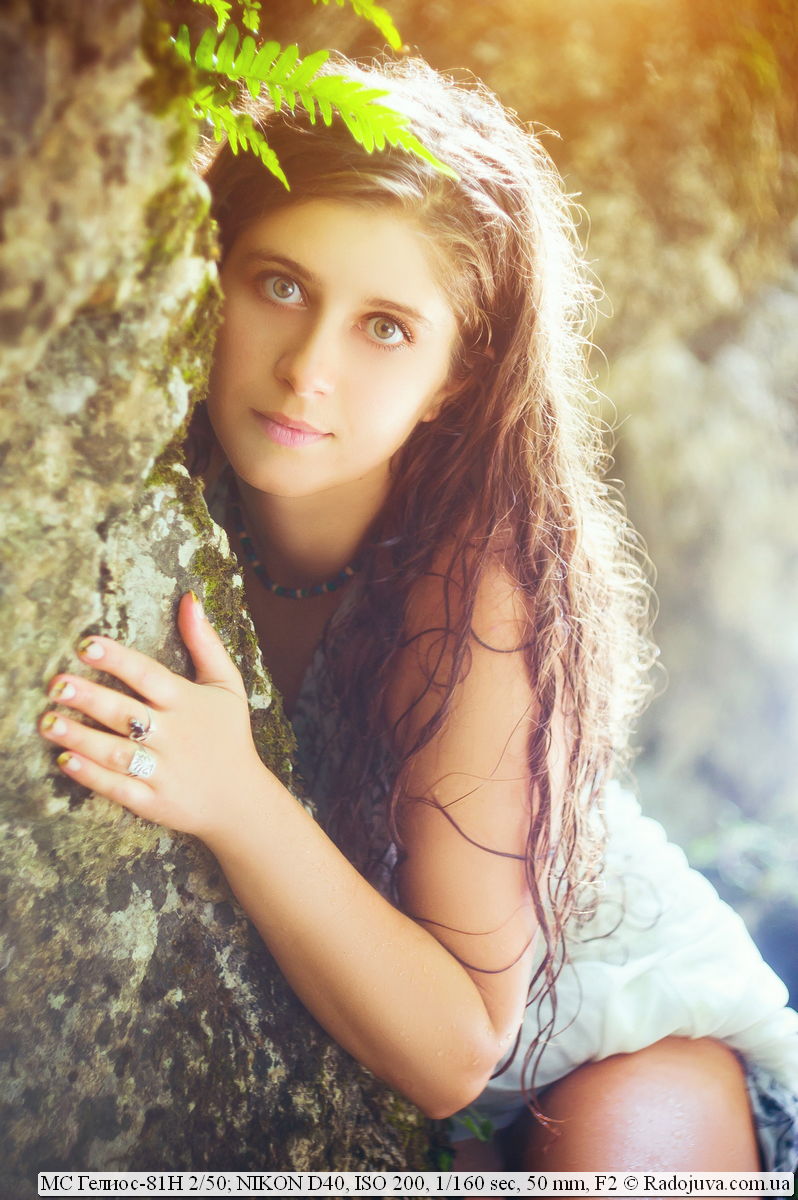
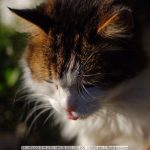









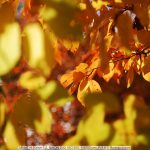
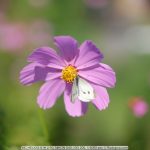



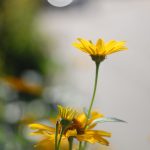




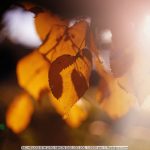

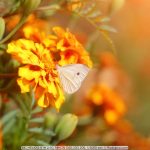



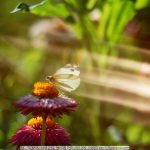





























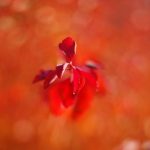



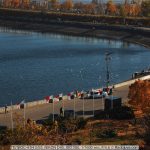

































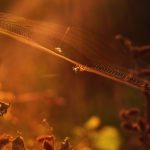
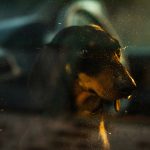









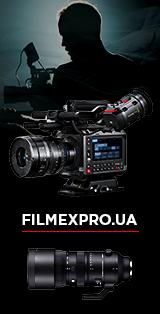
Hello Arkady!
First of all, many thanks for your site! A wealth of useful information!
Tell me please:
I bought Arsat, in excellent condition: all the rings work fine, the jump too. After the whale, Nikon 18-105 (I have a D7000) is still shocked by the frames that it issues. But there is a small nuance: It is very difficult to get a sharp frame at 2.0. At first, he was simply guided by the viewfinder, then he began to try to shoot only when the green dot was triggered. But I still miss the focus. Sharpness is either before or after the subject being shot (so far I've shot only indoors). Out of ten frames, clear 2-3. Then he tried to shoot at infinity on the street and was unpleasantly surprised by the lack of sharpness :( Perhaps I just do not have enough experience with a manual lens?
If there are still sharp frames, then the blunders are simply related to the complexity of working with a manual lens, especially with F / 2.0.
Thanks for the answer! But in my case, nevertheless, sharpness depended not only on me, but also on the lens. There are various quality options (as you said earlier) for both Arsat and Helios. I bought Arsat H 1: 2 50mm from your link (manual optics), later agreed and exchanged it for Helios-81H 2/50 MC.
Honestly - I did not expect such a difference in quality! Helios immediately gave a GREAT focusing at f / 2.0 and at all apertures! To infinity - great! It was aimed both, purely subjectively, by the appearance in the viewfinder, and by the green dot in the viewfinder. Bomb! I didn't expect this! By the way, on Nikon D7000 Helios stood up like a native, without any resistance. There was a little trouble with Arsat when detaching the lens.
And thanks again for your work on the site!
PS Beer with me! :)
MC Helios-81N was made back in the USSR (after 1986 with state acceptance!). Hence the "GORGEOUS". And the Arsat - everything! - they were made somehow after the collapse of the USSR from the remains of the stock of Lytkarinsky glass, the import of which was stopped. As they say in Odessa, “feel the difference” ...
Good afternoon Arkady!
This lens makes sense to buy a lens hood, and if so, as I understand it, you need a lens hood with a diameter of 52mm
Thanks in advance for the answer
A 52 mm hood (and other sizes too) can be assembled by screwing together up to 4 frames (for the G-81) of Lytkarino color filters, having previously unscrewed them from the glass. It will work no worse than any branded one.
Hello Arkady, I bought Arsat 2/50 when taking a photo from a distance of more than 3 meters, it's hard to catch the focus on f2, in general I'm happy with the pictures, but when aiming at the focus, the focus ring loosens a little, about 2mm, it creates inconvenience a little, tell me it is found on other copies or only on mine, and how to fix it if appropriate.
Working at open apertures and long focusing distances is always difficult. Easy play is rare, it is not critical.
Thank you, reassured, I will continue to study.
2mm for optics is a lot. Try to show the repair technician. On my g 81 n the ring movement is moderately tight. It turned out that the focus is even better than the 18-55 kit.
On my arsat 50/2 the ring is also moderately tight, the play is felt at the moment when you catch the focus point, you turn the ring back and forth, otherwise the lens is very knocked down, the ring itself does not hang out and the pictures are pretty good.
Good evening, Arkady. Tell me, is there any point in buying a Helios 81m 53/2?
He is without enlightenment, but in good condition. They write that it is unrealistic for them to shoot on the street and the gray aperture blades of the photo spoil. At the same time, bokeh draws very interesting and the picture deserves respect.
Thank you.
Arkady tell me, Helios 81n will stand without problems on Nikon D7000?
I tried - vtal like a native! And Helios and Arsat. But there may be options.
Good afternoon!
I have Helios 81H - I like the picture very much.
But…
I focus mainly on the green point, and the field of focus is obtained behind the subject (focusing on the eyes - the sharpness near the ears begins), what can you advise for more accurate work ???
And one more thing: the jump rope works up to 2.8, then it closes 1 out of 5 times ... as a result, the pictures are mostly 2 or 2.8 = (((How can I fix this?
The grease of the diaphragm thickened (this was the trouble of all G-81Ns until 1991, when the grease was changed). It is necessary to disassemble the lens and rinse the diaphragm assembly. How and where to do it, Arkady knows.
Sorry, I’ll add: is it possible to somehow fix the lever of this very skipping rope so that the diaphragm is tightly regulated by the ring? Will there be any consequences for the D3000 camera ???
Thank you in advance!
Best regards
Sergey Sheremet
Question to Arkady. Have you bought lenses from “EBAY RU”? What is ADORAMA company? Is it worth buying (manufacturer refurbished), which in translation is refurbished by the manufacturer?
Did not buy. I can not tell.
Good afternoon! tell me if the mount on the Nikon cameras is the same, then what is the problem of setting this lens to d 90? If it jammed, what should I do? How can I check to install it safely on the camera?
The same problem exists with the native Nikon Non-AI lenses, on some cameras the skirt of the lens aperture strikes the restrictive protrusion on the camera. Like this - http://www.deep-life.ru/helios-81/rem-1.jpg
Yesterday I bought a HELIOS-44M 58f2 for Nikon d5100 converted to infinity. Sedni walked his hand beat - since everything is manual. what do I want to say? picture class - far kitovsky 18-55. focusing is a delicate matter. on the open it is very difficult to catch, on the covered with 4 it is normally caught. In short, my advice - who does not have a screwdriver, I advise 50mm nikkor1.8g without problems and everything else. Of course, the money is completely different, but the win is obvious - efficiency is above all, as I think speed is the key to success, unlike kittens who are born blind. who does not need to hurry this very thing. take it you will not regret it.
Arkady, I beg your pardon, but you have not written a word about the version of this lens without the letters “MC”. I guess what they mean, but I also drew attention to the external differences between these lenses. Unfortunately, I haven't seen either one or the other, but the photo shows a deeper fit of the front lens and a wider focusing ring for a non-multi-coated sample.
This option is cheaper and prettier for me. As a beginner amateur photographer, I am currently evaluating all the photographic equipment by external signs :). Is it worth it to take these differences seriously, or maybe they are two different lenses? Thanks. Alexander.
The review indicates that different lenses differ in coating. The letters MC just speak of enlightenment. If there are letters MC, then the lens is multi-coated, if they are not there, then it is not coated. The review also has a link to the version without MS, where it is clearly written that without MS, the lens copes worse with flares. Better not to spare the money and take a decent MC option.
Understood, we will search, thanks for the prompt response. I apologize for the carelessness.
Arkady is me again, tell me, and without a dandelion on Nikon D3100 in the long mode, will the green light function?
is it worth giving 300 UAH? for the extra trouble ??? add these 300 UAH and buy without a motor - if it's so hot. dandelion is another PR. tested for fools.
the focus indicator will light, but without practice and without shooting experience ????? on the open diaphragm ????, and efficiency ???? if not in a hurry then dandelion and FIG is not needed. It takes me about a second to focus.
Helios-81N 50/2 costs 400 UAH + dandelion 300 UAH. = troubles - nothing works. NIKKOR 50mm f / 1.8V - the new one costs 900 = everything works except focusing (with the knobs on the light bulb), there are no spoiled or dropped frames. count your hard-earned. I bought a HELIOS-44M 58/2 with infinity for 400 UAH, I played enough in 2 days and I'm not happy although the pictures are class - I will sell. there is no efficiency, but for me this is the main thing.
NIKKOR 50mm f / 1.8D typo left.
For mediocrity I’ll say: HELIOS 44m4 in comparison with HELIOS 81H is very weak. At the flea market they give 50 gr. G-81N is a Soviet legend. Imagine how it will be appreciated in 10 years. And the method of focusing does not matter, the main thing is that it is cool. If you need speed, NIKON 50 / 1.8G will be just right.
thanks. so I think about NIKON 50 / 1.8G. only speculation - he or NIKON 50 / 1.4G well, of course it is understood with the motor. I won't say anything about HELIOS 81N, but the picture with HELIOS-44M 58/2 is amazing. I will not advertise on dandelion.
Your instance of the G-44 is weak. For example, my 44th full hole is sharper than the 81st.
Study the materiel: G-autofocus with a motor, D-manual. The difference in aperture ratio 1.4 and 1.8 is not significant, but the price ...?
do not bicker. I studied the materiel and prices. toad crushes. thanks.
Tell me the che means Nikon 50mm f / 1.8G AF-S Nikkor ?, Th for the letter S on the lens? connoisseur of materiel.
I have MC HELIOS-81 (written in Latin letters) without the N. index. I came bundled with Kiev-19. Is there any difference between this lens and the analogous ones with the H index and not in Latin?
For mediocrity, I answer: AF-automatic focusing, S-noiseless wave motor. In the internet there are answers to any question, train.
I am amazed at your ability to photograph cats: I just point the camera at how they flee instantly.
I use the Pentax K200D. Wonderful, I like it. Good glass, fast aperture, even if you miss a hint of sharpness, (but not very much) you get good portraits, soft. Slightly finished the bayonet mount under the Pentax.
Arkady, tell me a Helios 81 machine, how is it different from Helios 81N and can it be used on the D5100?
Please read the material in the review before asking a question. There you will find this:
Also, there is a Helios-81-automatic lens from the Kiev-15 and Kiev-10 cameras. Helios-81-Avtomat will not be able to install and work with the adapter for modern Nikon and Canon cameras, as it has a specific rare mount and working distance.
The G-81-Avtomat doesn’t have a diaphragm control ring at all!